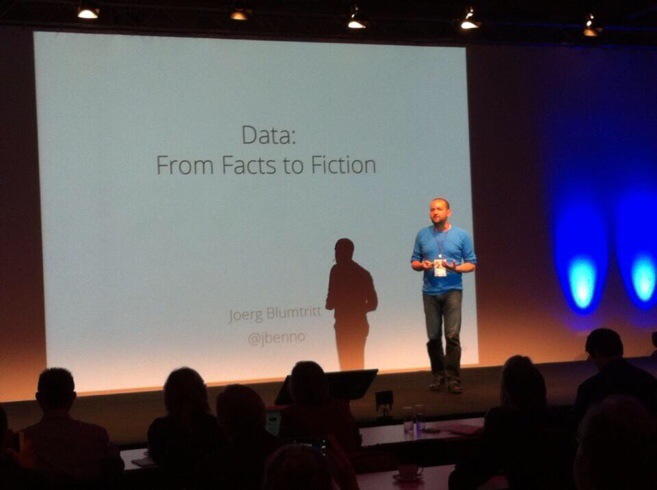
Today, we speak with Joerg Blumtritt (JB), CEO and Co-founder of Datarella, about product development based on Big Data.
Q
What is so special about product development based on Big Data?
JB
Big Data is not so much about technology, it’s more about letting go your traditional business practices: where you used to differentiate between data and meta data or between master data and transitional data, you now just see …. data. If you take Social Media data for example, the old way of analyzing things would have been taking the texts of postings a data and time stamps, geolocation, the profile of the author, etc. as meta data. However, for most contexts, it’s far more valuable to analyze the connections of different authors or it might be even more telling to include the geolocations to reveal the true meaning of the posting without understanding a single word of the language it as written in (BTW: this is how the NSA does Social Media monitoring)
The second aspect of this is not to work hypothesis-driven, but in an explorative way: don’t restrict yourself by narrowing the scope – instead analyze all given variables.
Q
You mentioned Social Media monitoring. In times of everybody being an author and adding content to the internet on a daily basis – is there still a need to know even more about “the user”?
JB
Data is made of people. Mass customization, for the first time, is not a buzzword disguising half-baked services or products. Now we have the means to stop aggregating people and to deal with each person individually.
Q
Regarding the paradigm shift of not building hypotheses first but collecting analyzing all data: isn’t then former US State Secretary Donald Rumsfeld the real inventor of Big Data analysis by pointing to knowns, unknowns, unknown unknowns, etc.?
JB
The known knowns in Rumsfeld’s narrative are classic dashboards, where only information from your data warehouse gets displayed – which already is known. Big Data really is about the unknown unknowns. However, there are also unknown knowns – things like social conventions, moral restraints, etc. that bias our perspective.
Q
Product development typically requires stable company structures and efficient processes. Now we have this paradigm shift and with it – instability and untested processes. What is the most important aspect of product development based on Big Data?
JB
Keep your product in permanent beta. Publish fast, collect all information how your product is used by its users, and constantly update with what you have learned.
Good product development with Big Data means being agile, iterative and lean and focusing on the Minimum Viable Product MVP instead of feature-laden products. Always A/B test: present small variations of your product to random samples of users and check if variations increase the value of your product.
Q
Ok – so we have a lean startup process here. But – where to get ideas from in the first instance?
JB
My favorite quotation for this is:
Never look into the past – it only distracts from the future!
by the Incredible Edna ‘E’ Mode.
Business intelligence only tells you what is already there. so look to other industries to get inspired: take Google or Tesla entering the car manufacturing industries: both have been software and services companies disrupting a classic industry. The full product development cycle to build a robotic car factory from an old used one to drive in a compelling electricity-powers sportscar took Tesla less than 2 years. Compare that with literally decades it takes to develop one of the classic road dinosaurs.
Q
To sum it up:, your recommendation for an optimized Big Data product development process is: never underestimate attacks from completely different industries, collect and analyze all available data in a very lean way and get your product out early to learn from your customers.
JB
Exactly.
Q
Thank you very much!
